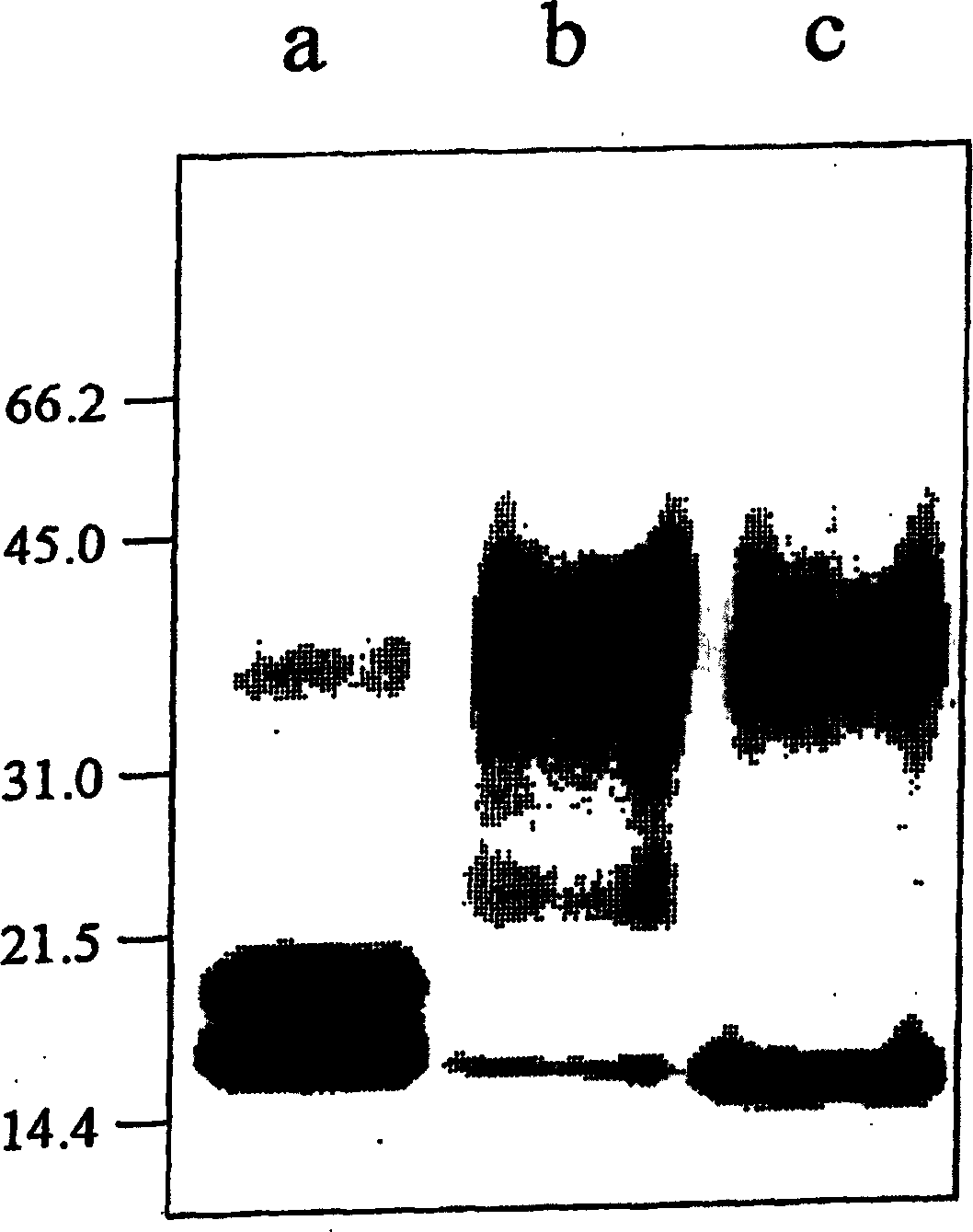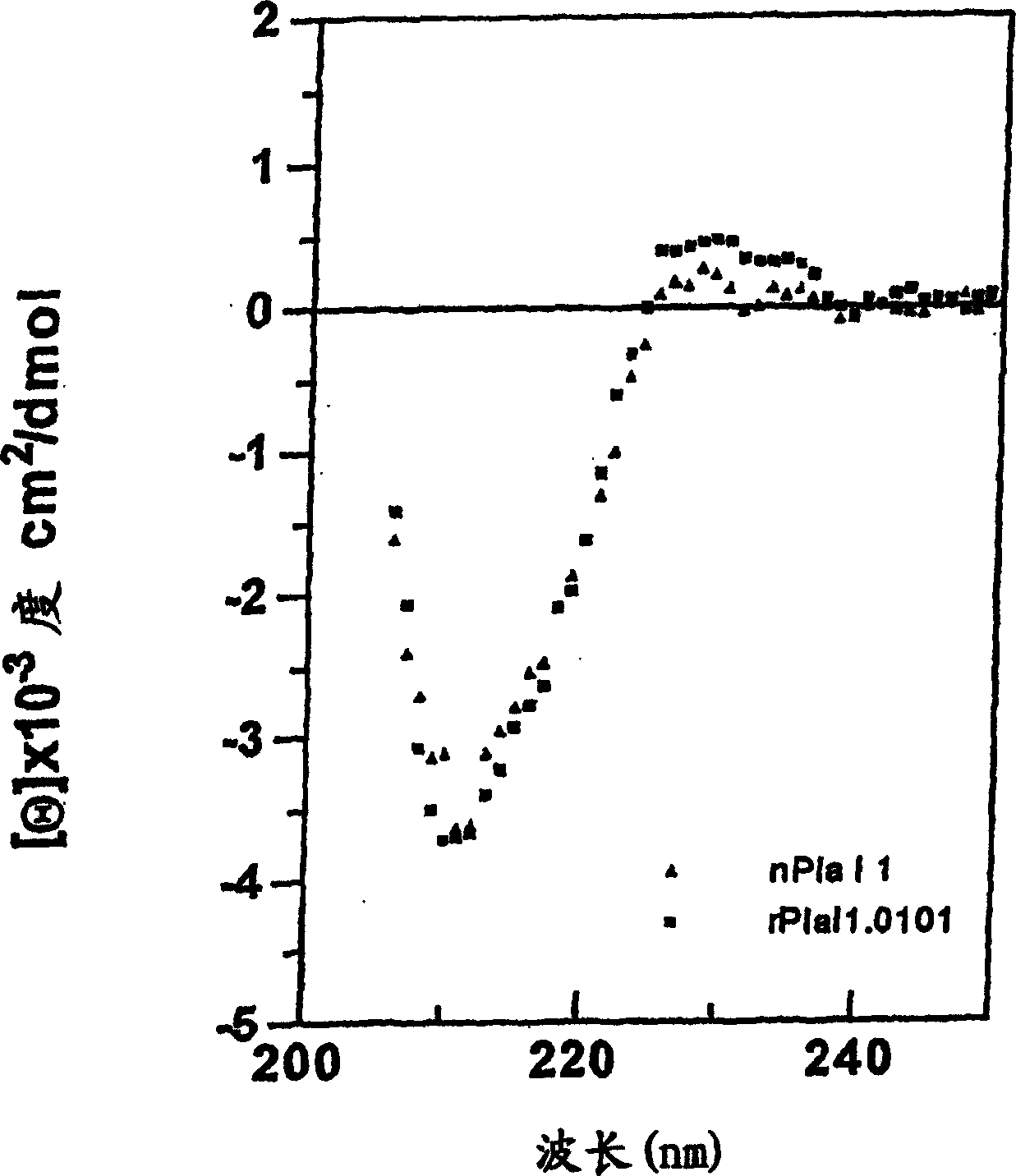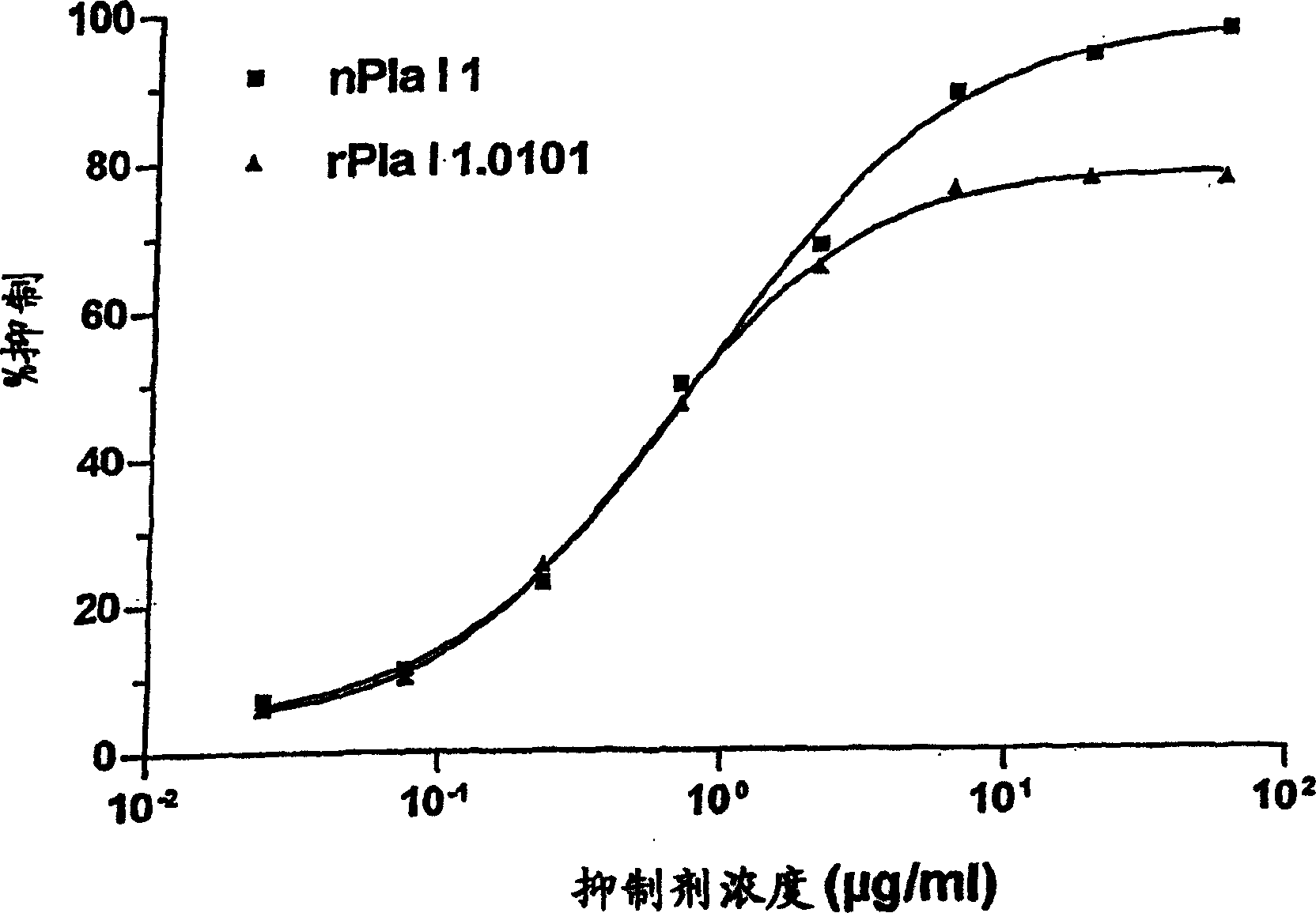Recombinant DNA encoding the major allergen of plantago lanceolata pollen, PLA L 1, and applications thereof
A major allergen, plantain technology, applied in recombinant DNA technology, applications, allergic diseases, etc., can solve problems such as uncharacterized plantain allergens
- Summary
- Abstract
- Description
- Claims
- Application Information
AI Technical Summary
Problems solved by technology
Method used
Image
Examples
Embodiment 1
[0101] This example is used to describe the isolation of RNA from P. lanceolata pollen, the synthesis of first-strand cDNA, and the amplification of the 3' fragment of the Pla l 1-specific cDNA.
[0102]Total RNA was extracted from staghorn plantain pollen by prolonged sonication of pollen grains in a denaturing solution, followed by phenol-chloroform extraction of the supernatant. Pollen (0.6 g) was suspended in 7 mL of denaturing solution (4M guanidinium thiocyanate, 25 mM sodium citrate pH 7.0, 0.5% (w / v) sarcosinate lauryl, 100 mM β-mercaptoethanol) (25) , and then the suspension was sonicated in a Vibracell sonicator VC300 for 30 min, with a working cycle of 50% ultrasonic exposure, at setting 9. Then 0.7mL of 2mM sodium acetate solution with pH4.0, 7mL of water-saturated phenol and 1.4mL of chloroform: isoamyl alcohol solution (49:1, v / v) were added to the sonicated suspension, and warmed at 4°C. Incubate for 15 minutes, shaking occasionally. The two phases were separa...
Embodiment 2
[0111] This example describes the cloning and sequencing of the Pla 1 1-cDNA 3' fragment.
[0112] The Pla 1 1-cDNA 3' fragment amplified by 3'-RACE PCR was purified from agarose gel, and then it was cloned into the pGEM Easy vector carrying a T nucleoside hanging end (Promega Company)[ 26], the plasmid carries an ampicillin resistance gene that can be used to screen transformants and multiple restriction enzyme sites on both sides of the cloning site. Under the action of T4 DNA ligase, incubate at 4°C for 16 hours to carry out the ligation reaction. The ligation product was then transformed into E. coli DH5α. Plasmid DNA was prepared from recombinant transformants by using the method of Wizard Plus Minipreps (Promega). In order to confirm that the screened transformant contains the desired insertion sequence, the plasmid DNA sample was digested with EcoR I (Boehringer), and then analyzed by agarose gel electrophoresis. The complete double-stranded nucleotide sequences of s...
Embodiment 3
[0115] This example describes the synthesis, amplification, cloning and sequencing of the 5' fragment of Pla 11, which includes the nucleic acid sequence encoding the leader peptide and the N-terminal fragment of the protein.
PUM
 Login to View More
Login to View More Abstract
Description
Claims
Application Information
 Login to View More
Login to View More - R&D
- Intellectual Property
- Life Sciences
- Materials
- Tech Scout
- Unparalleled Data Quality
- Higher Quality Content
- 60% Fewer Hallucinations
Browse by: Latest US Patents, China's latest patents, Technical Efficacy Thesaurus, Application Domain, Technology Topic, Popular Technical Reports.
© 2025 PatSnap. All rights reserved.Legal|Privacy policy|Modern Slavery Act Transparency Statement|Sitemap|About US| Contact US: help@patsnap.com



